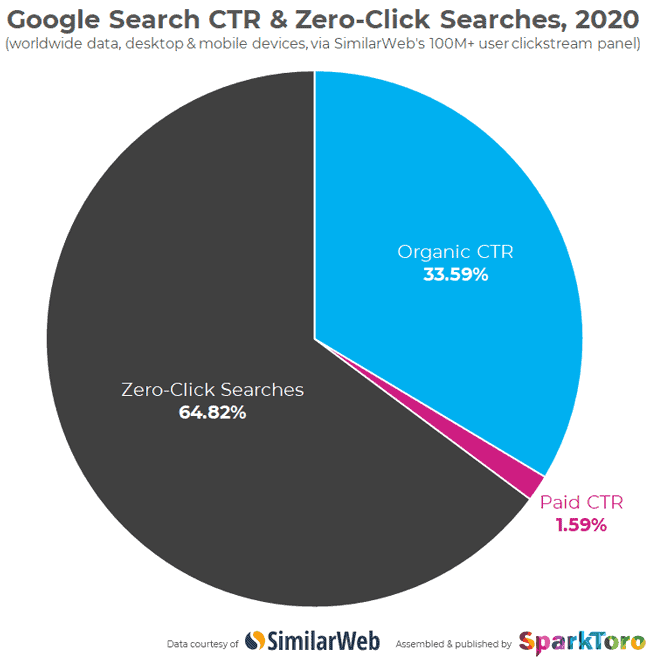/
Content
/
0 min read
MUM: The technology that will revolutionize search as we know it

If your content strategy is based around "keywords" and not topics or entities
If the content you serve is primarily text instead of sound, video, images, or interactive elements (depending on search intent, of course)
A lack of focus on EAT or topic depth
Poor internal linking structures
A lack of structured data on your domain
SEO will merge more and more with content marketing – the question won't be "What do we have to do to rank well?" but "What is our audience looking for?"
Full-stack SEO departments are going to have both strategists, content writers, designers, and video producers as well as developers.
Technical SEO will be even more important, as indexing, crawlability and structured data becomes more necessary
An even greater focus on customer journeys – a problem that has to be solved under the umbrella of decreasing tracking possibilities
As the top funnels of the searcher journey are fulfilled by Google, optimising for how to convert the users who land on the bottom-funnel pages will be the key to success.
SEOs will have to move away from their former frameworks and adopt new ones.
SEOs will – unless Google significantly expands their reporting – scramble to find ways to measure impact and ROI.
It will be expected to have a greater level of understanding on how Google works behind the scenes
You will have to consider more comprehensively the entirety of the searcher journey
Focus on improving the overall search experience. Figure out what people are looking for, how to fulfill that desire in all possible formats, and how to make it a as smooth, fast and friendly experience as possible.
Implement structured data for all products and any relevant pages.
Deliver content in more formats. Yeah, this was also a part of step 1, but we need to reiterate the importance.
Focus on content topics and covering the entirety of a topic instead of keywords.
Using 'Things to know', Google will guide searchers on their blind spots and show them what they don't know they should be searching for.
Broadening or narrowing a search
Better video searches with automatically identified 'key moments' as well as related topics.
MUM is going to change search, making especially complex queries better.
It will mean an increasing focus on visual content to succeed with SEO.
Businesses will experience both ample opportunity but also grave threats.
Opportunities in a greater reach and better engagement
And threats in the form of more no-click searches and a race against time.
If you start now, you should be able to prepare for MUM before 2022.
As a Google user, you've probably experienced doing many searches before actually finding what you were looking for.
From a search point of view, this is something that can feel like a bad ‘user experience’. Maybe you'll blame yourself for being bad at searching, or maybe you'll come to the conclusion that the answer you seek is not to be found.
This is a struggle that Google has realised and feels responsible for improving. Therefore, Google has developed a whole new technology that will both deliver greater search experiences across languages (with fewer search queries needed) and make it possible to search in multiple formats.
Google calls it “MUM”. A technology that is described as being 1.000 times stronger than BERT.
In this post, we'll walk you through this new technology and explain the 'need to know' of it for everyone working with SEO.
What is MUM exactly?
MUM stands for “Multitask Unified Model” and is designed by Google to much better understand search queries – even in cases where the search is extremely precise.
The goal is to reduce the number of searches or questions needed to find the answer. Further, the purpose is to give users more satisfying results and a more comprehensive way to understand information.
How MUM works
MUM has several features and can in short be described as both multilingual and multimodal. This is based on both a T5 text-to-text framework and Transformer architecture as we also know from BERT - only being 1.000 times stronger.
With MUM, Google can understand at least 75 languages and is able to deal with more variables at once. This gives a more complete search engine than we have seen until now – and a search engine based on a multilingual model.

With the Multitask Unified Model, Google can also understand information from different formats such as text and images simultaneously.
Google has also announced that this will be a feature in the Google Lens tool, where both a picture and question combined will deliver even greater results. This is possible due to greater use of signals.
Further, the video format is expected to join the multimodal search as well.

Google wants its users to be able to get things done with fewer searches. And that means that the way Google searches work needs to be more 'sophisticated'.
MUM is therefore designed to understand complex search queries – a process which on average typically requires 8 steps for a definitive answer. In other words, this AI technology will facilitate the browsing process of users.
Examples of the MUM technology in action
One of the revolutionary benefits of MUM is the ability to combine text and visual searches – for example when looking for tips on how to fix broken items, discovering new products, and much more.

Another fantastic addition is the 'Things to know' feature, which will help showcase related topics that searchers might not even know they were looking for.

How MUM can/will benefit your business
Of course, the next question to answer is what this means for your business. The impact will be unclear until we can actually measure it. For now, we'll stick with trying to predict the future. An easy task, eh?
We'll return to when you can expect MUM to impact your business later in this article.
More reach
As search results begin showing up in multilingual forms, you can expect more international traffic. This means that even if unoptimised, while your business is based in Denmark, you might experience visitors from other countries – or at the very least exposure of your brand to other countries. In an increasingly connected world, this can also mean that you might need to be prepared to handle customers outside your normal language region.
However, the downside is that this might also mean less relevant traffic. Because if you're selling hiking boots out of Denmark and are able to satisfyingly provide an answer to a question about hiking in Denmark, chances are the person searching from another country is still not going to buy from you and will choose to support a local business instead.
In the end, more traffic is not necessarily better unless you can actually use that traffic to fulfil your commercial goals.
Better engagement
On the other hand, multimodal search means that you will be able to serve content in the required format regardless of the search query. And we know that video, voice, and visual content usually create better engagement.
Is MUM also a threat?
All change is a threat as well as an opportunity. MUM is a threat – not just for those not optimising – but it could also spell massive revolutionary changes in the way marketers approach SEO. We're going to walk you through some of the threats MUM poses now.
Bad news for the old-schoolers
Back in the old days, SEO was about delivering one keyword per page in text format. It was about abusing unnatural links, fake profiles, and trying to win the SERPs by any means necessary.
Most good SEO companies have already left this path. But some companies still adhere to the old way of doing things. And some still do achieve success with it. Google is not perfect. But if you haven't yet adjusted to the new user experience-centred SEO practices, you are facing an uphill battle once MUM rolls up to the party.
Here are some of the signs you should start changing your SEO strategies:
Get into Google's ecosystem
We know Google pulls information from a ton of sources – and this will be even more true with MUM. One example is their e-commerce focused Merchant Centre, their locally-focused Google My Business and their publisher-focused Publication Centre. All of these supply Google with data and insights that Google can convert into delivering the right results to the right queries.
So if you aren't already using all of these services, you need to start now. It'll help you in the short run and prepare you for the long run.
The rise of no-click searches

And this is without MUM. Imagine what will happen once more and more content is directly transformed, translated, and served on the SERPs. In short, it can mean that even more searches are satisfied on Google's domain instead of on yours.
On the other hand, it of course also makes room to be shown on a greater part of the search journey. Something that needs to be converted to traffic.
What does MUM mean for SEO?
We don't think MUM is the end of SEO. No, it's more of a rebirth.
As searchers are increasingly satisfied on Google – and as your intended audience gets more and more ethereal – you can expect marketing bosses worldwide to look at their graphs and stats and despair.
Or be filled with joy. Maybe they had the SEO employee who could read the stars and adjust the course before MUM. If MUM is going to change the world of search, we believe it will massively change what SEO means in a strategy, and what SEO professionals are expected to do:
Changes to strategy
Changes to the SEO role
How can I prepare?
We are going to lay out the steps you can take to be more ready for MUM:
When to expect going live
We already know that Google is using MUM (or parts of it) on parts of their product. At the end of September, Google announced that 'in the coming months', MUM was going to be integrated with some of Google's search results.
Following the schedules under which Google normally rolls out updates, we can expect testing to take place here in Q4 of 2021 with a more broad, multinational release somewhere during Q1 2022.
According to the official announcements, we can expect the following changes first:
Key takeaways
So what it boils down to is this:

CPO & Partner
Thomas is the CPO (Chief Product Officer) and Partner at Bonzer, which means his day-to-day focus lies in constantly analyzing Google's algorithm and developing SEO as a product. Thomas has worked with SEO for several years with a strong passion for sharing his knowledge on how businesses can best implement SEO into their operations. In addition to Bonzer, Thomas contributes his expertise to readers at publications like Search Engine Journal, DanDomain, and Detailfolk. He also teaches Digital Media Strategy at Copenhagen Business School and SEO at DMJX in Copenhagen. If you have any questions or requests regarding the SEO universe, feel free to contact him at [email protected].

Let us show you an SEO strategy that can take you to the next level
A brief meeting, where we review your position in the market and present the opportunities.
Let us show you an SEO strategy that can take you to the next level
A brief meeting, where we review your position in the market and present the opportunities.